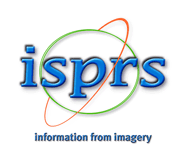Adaptive Voxel-Based Weighted Multisensor Point Cloud Fusion with Color Consistency for Indoor Digital Twin Construction
Keywords: Laser Scanning, Point Cloud Registration, Sensor Fusion, Data Integration, Indoor Digital Twin, Smart Infrastructure
Abstract. Building accurate indoor digital twins is essential for smart-building services such as asset tracking, space planning, and AR/VR navigation. Yet a single LiDAR sensor cannot supply both millimeter-level accuracy and complete coverage: fixed terrestrial laser scanners (TLSs) leave occlusion holes, whereas handheld mobile laser scanners (HMLSs) suffer from lower geometric stability and color drift. We propose an adaptive voxel-based fusion pipeline that combines a FARO Focus3D X330 TLS with a CHCNAV RS10 HMLS to overcome these limits. First, the handheld point cloud is rigidly registered to the TLS reference using Iterative Closest Point. TLS voxels with sparse points are flagged as holes; for each hole we admit only handheld points whose point-to-plane distance and normal deviation fall below strict thresholds, ensuring geometric consistency. Next, we correct color bias by learning a global linear RGB mapping from overlapping scans and refining it locally with weighted regression. Finally, we blend colors across the TLS–handheld boundary to remove visible seams. Experiments on classroom scenes from a smart-campus testbed show that our method recovers 85.7 % of missing surfaces, lowers the global point-to-plane RMSE by 14.8 %, and improves mean color difference by 22.2%. The resulting high-fidelity, color-consistent indoor models give facility managers and planners reliable data for maintenance scheduling, occupancy analysis, and long-term space optimization.





